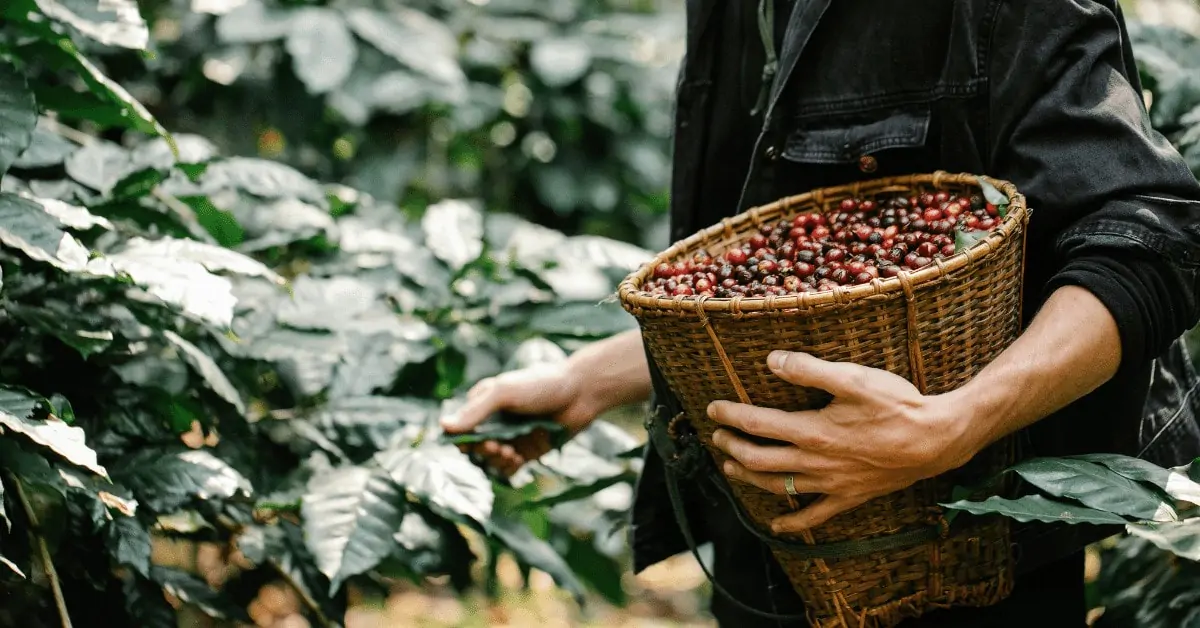Here’s a fun fact you might not know:
While there are lots of countries that grow the stuff – the vast majority of coffee consumed all over the world comes from just a few leading producers.
Brazil and Vietnam alone, the world’s top 2 coffee giants, account for more than half of the world’s annual coffee exports.
In this article, we’ll take a look at the top 15 coffee producing countries today. We’ll talk about how much coffee they produce, and what makes the coffee in each of these countries unique.
Ready to find out more?
Let’s dive straight in!
Where Does Coffee Grow?
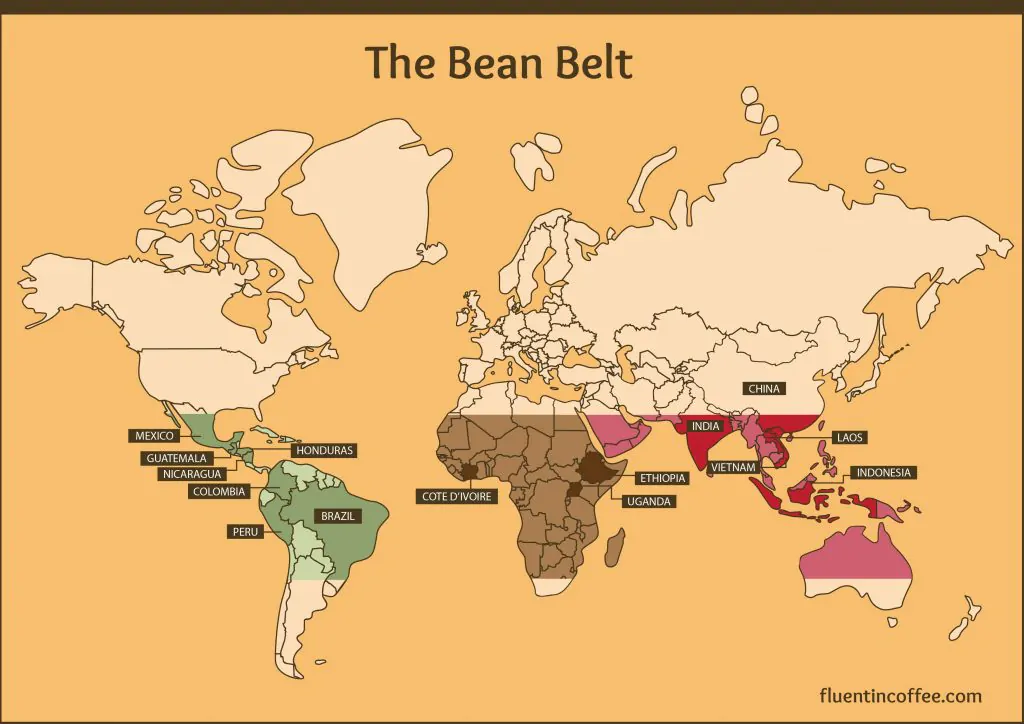
You may or may not know that the coffee bean is the seed of a coffee cherry.
That’s right – a fruit.
It grows on the coffee tree, which thrives in warm, tropical climates. The countries where the climate is suitable for coffee make up what’s known as the coffee belt, or the bean belt. It’s an area that stretches around the globe, between the Tropic of Cancer and the Tropic of Capricorn.
There are some 70 coffee producing countries across the coffee belt, but only around 50 grow coffee for export.
Now, here’s where things get interesting.
Coffee beans have different flavors and qualities depending on where they’re grown. Different flavor profiles are characteristic for certain regions within the coffee belt.
For instance, coffee that’s grown in Africa is known for having distinctive fruity, citrusy notes in its flavor profile. It’s also lighter and more acidic than coffee grown in other parts of the world.
On the other hand, coffee from South America is more likely to have prominent nutty, sometimes even floral notes that come to the forefront. It typically has a medium body and some acidity, but not too much.
Then, you’ve got coffee that grows in Asia, which is characterized by earthy flavors reminiscent of spices like cinnamon or clove. Coffee from this region is sweeter, and has a heavier body.
Pretty cool, huh?
Let’s take a closer look at the leading 15 coffee producing countries in the world, and what’s specific about the coffee that comes from each of them.
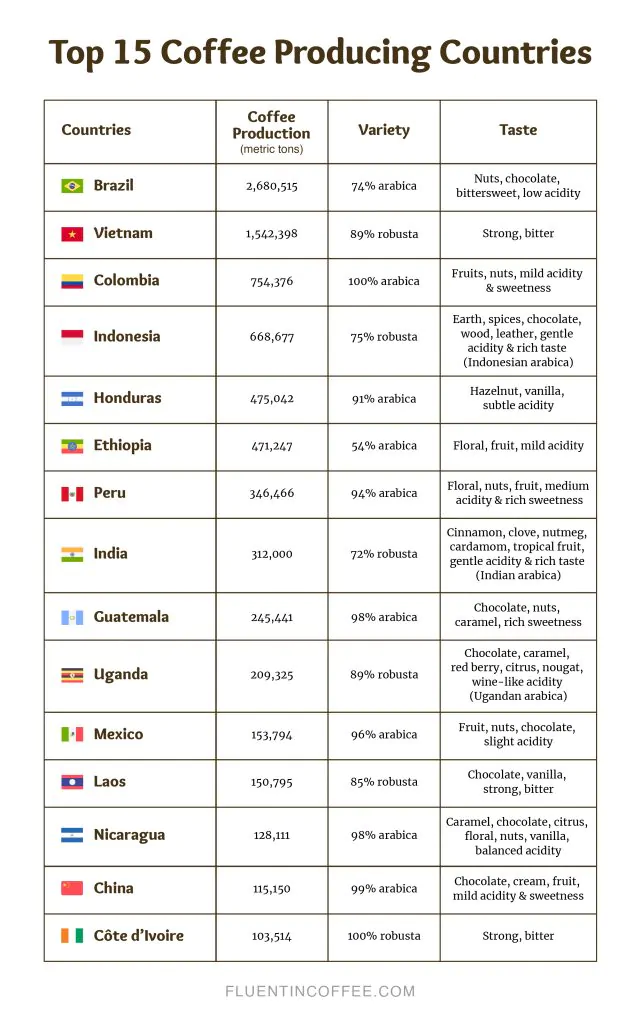
Brazil

It probably won’t come as a surprise to you that the leading producer of coffee in the world is Brazil. It grows all over the country on plantations that span roughly 2 million hectares.
Around 70% of the coffee that’s grown is of the arabica variety.
But get this:
Did you know that it produces around 40% of all arabica coffee consumed worldwide?
Now that’s a whole lot of coffee.
But how much does it come to exactly?
More than 2.6 million tons in the past year!
You read that right.
That’s a million tons more than Vietnam, which is the second largest producer of coffee. Just to give you some perspective.
Brazilian coffee beans are characterized by nutty, chocolatey flavors. Because they’re grown at lower altitudes, they’re not very acidic. Instead, they’re bittersweet – kind of like dark chocolate.
Vietnam
In second place, producing a whopping 1.5 million tons in the past year, we have Vietnam.
Unlike Brazil, which produces mostly arabica beans, 90% of all the coffee that grows in Vietnam is of the robusta variety.
If you’ve ever been to Vietnam, you’ve probably tried a type of coffee drink prepared with sweetened condensed milk. The reason this recipe is so popular there is because robusta is an inferior quality coffee that tastes bitter, and doesn’t have very nice flavors on its own.
The sweetness of the condensed milk is able to balance out the strong bitterness of the robusta.
Still, the robusta beans grown in Vietnam account for around 20% of the coffee consumed around the world. Robusta beans are mainly used for blends, as they can give arabica coffees a fuller body when you mix the two together.
They’re also used to make instant coffee, which makes sense, right? I mean, using good quality arabica beans to make instant coffee would just be sacrilege.
Colombia
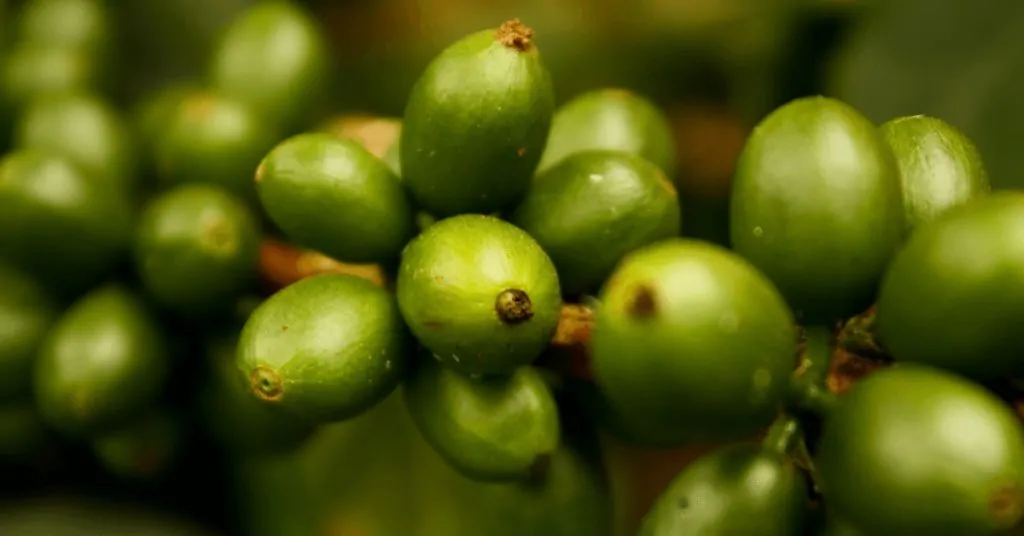
Colombia is internationally known for its coffee culture. So, it’s no wonder that this South American country is the world’s third leading coffee producer.
Coffee cultivation took off in Colombia all the way back in the 1700s.
Today, Colombia produces over 754 000 tons of coffee this past year. That doesn’t seem super impressive compared to Brazil’s 2.8 mil, but keep in mind that Brazil is around 7 times the size of Colombia. It’s definitely super impressive when you look at it that way.
Oh – and all of the coffee produced in Colombia is arabica. That’s right, all of it.
Colombian coffee is well known all over the world for being of a very high standard. It has fruity and nutty aromas, a mild body, and a hint of acidity and sweetness.
Indonesia
Next up we have Indonesia. At over 668 000 tons this past year, this island nation produces a serious amount of coffee.
Hey – they don’t call it “java” for nothing. The island of Java in Indonesia is the first place outside of Africa and Arabia that coffee was grown, all the way back in the 1600s.
So, what kind of coffee grows in Indonesia?
Well, mostly robusta.
But, its arabica coffee has got a very different flavor profile to some of the arabica varieties that grow in other parts of the world.
Indonesian arabica coffee has earthy, spicy, chocolaty, sometimes even woody, and leathery aromas. It has a rich taste and full body, while still retaining a gentle acidity.
Honduras
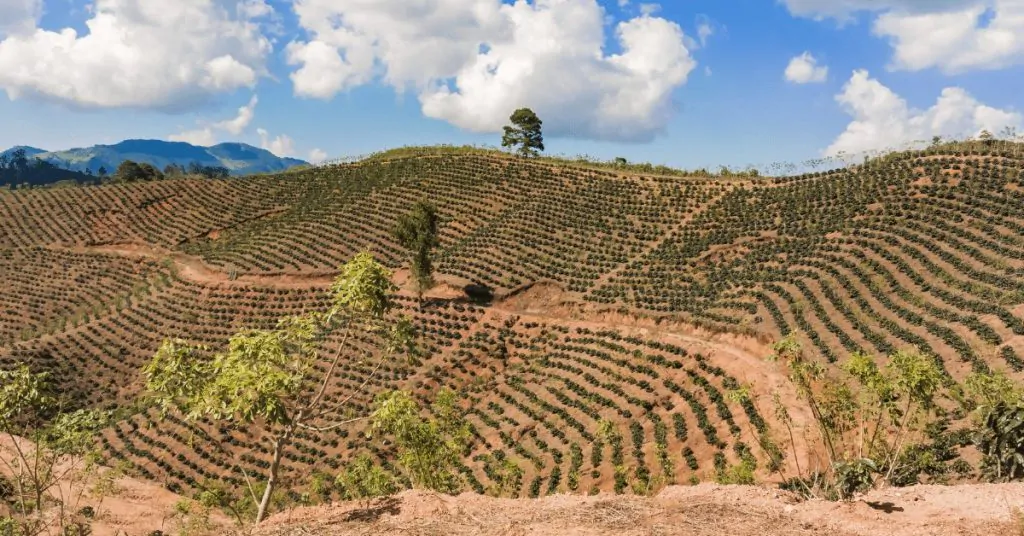
Coming in at #5 is Honduras, with an annual yield of more than 475 000 tons of coffee.
Coffee production in Honduras actually only took off around 50 or so years ago. But boy, it sure did take off. Today, Honduras is the largest coffee producing country in Central America.
Until recently, it was the world’s sixth largest coffee producer. However, recently Honduras has officially taken over Ethiopia, climbing up into fifth place.
Honduran coffee has a medium body with a subtle, balanced acidity. It usually has nutty aromas like hazelnut, and often a hint of vanilla in its flavor profile.
Ethiopia
Ah, Ethiopia – the cradle of coffee.
It’s widely believed that the coffee bean was first discovered in Ethiopia, by a goatherd named Kaldi.
Legend has it that Kaldi observed his goats eating coffee beans, and noticed that it made them energized and kept them awake at night. So, he decided to try them for himself, and that’s how it all began.
Now, it would be a while before people would switch from eating coffee beans to brewing coffee. But, in any case, people have been consuming coffee in Ethiopia since before the rest of the world had even heard of it.
Today, Ethiopia is the sixth largest coffee producer in the world, having grown over 471 000 tons of the stuff this past year.
Ethiopian coffee is known for its floral and fruity flavors, as well as a light body and mild acidity.
Peru
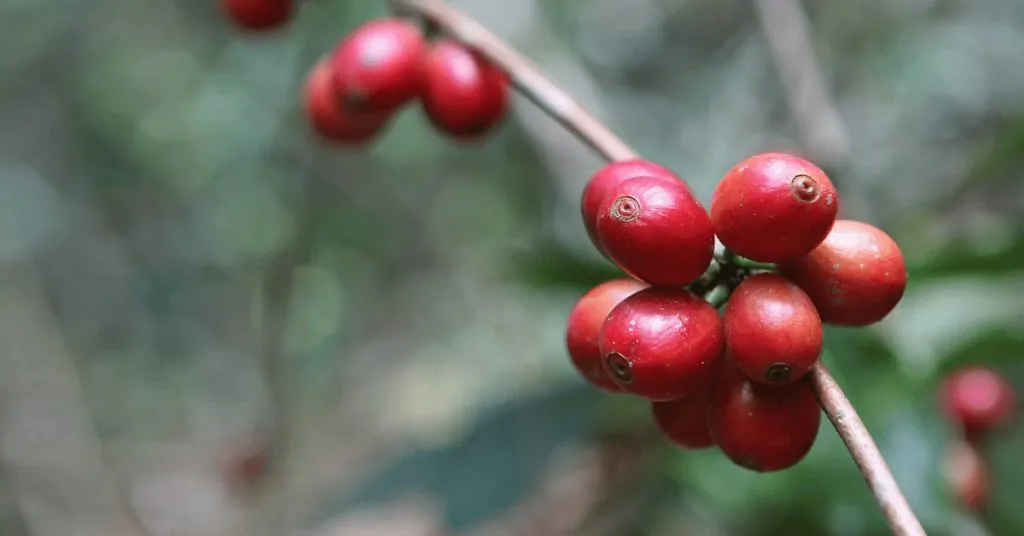
With over 346 000 tons of coffee produced in this past year, Peru is the seventh largest coffee producer in the world.
Coffee has been harvested in Peru for ages. Since the late 1700s, to be more precise. However, it wasn’t until the past few decades that they began exporting it around the world.
And thank heaven they did, because they produce some of the best coffee in the world.
The flavor profile of the coffee grown in Peru depends on whether it’s grown in lower altitude areas, or in regions higher up in the Andes.
Coffee that’s grown at lower altitudes in Peru typically has a medium body, mild acidity, and nutty, floral, and fruity aromas.
On the other hand, Peruvian coffee that’s grown at higher altitudes has a more pronounced acidity, and a rich sweetness to it. It’ll usually have more distinctive floral notes, too. This is the stuff you want to keep an eye out for – it’ll blow your mind.
India
The next country on the list is India – the world’s eight largest producer of coffee. India produced 312 000 tons of coffee this past year, which I’m sure you’ll agree is nothing to scoff at.
While India is better known for its tea production than its coffee, they’ve actually been growing coffee for a much longer time. It was all the way back in the 1600s that the first coffee crops popped up in India, whereas tea only hit the scene sometime in the 1800s.
What happened was a bad coffee rust swept through India in the 1870s. This led many farmers to switch their coffee crops for tea plantations.
Still, there’s some absolutely wonderful coffee being grown in India to this day. Indian coffee often has a similar flavor profile to Indonesian coffee – earthy, spicy, chocolaty and rich. Think cinnamon, clove, nutmeg, and cardamom notes. It also sometimes has tropical fruit overtones.
Guatemala
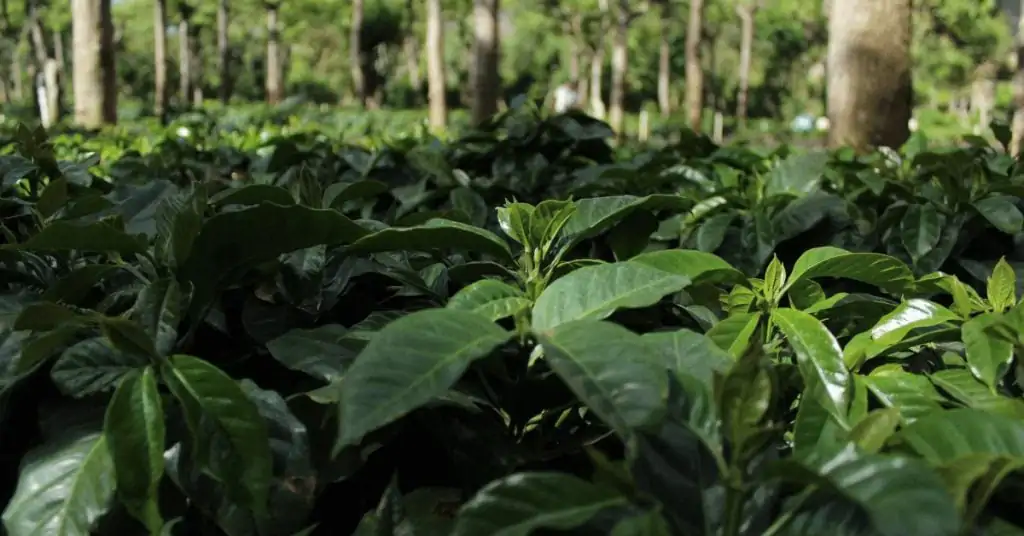
Moving on to Guatemala in ninth place. This Central American country produced over 245 000 tons of coffee in the past year.
Up until the mid 1800s, Guatemala’s main export was natural textile dyes. However, once chemical dyes took over the global scene, the industry in Guatemala collapsed. After that, they switched to coffee production instead, and it’s been their main export ever since.
And it’s almost entirely Arabica beans that are being grown there, so they make some top quality coffee.
The flavor profile of Guatemalan coffee is usually chocolaty, nutty, and caramelly. It has a medium to full body, and a good amount of sweetness.
Uganda
In tenth place – Uganda. With most of their coffee growing deep in the rainforests, this African country produced over 209 000 tons in the past year.
Uganda is mainly known for its robusta coffee, which is actually superior to most robusta species found in other parts of the world. They have a unique acidity, and a distinctive chocolaty flavor.
But more recently, Uganda has started to produce some really interesting arabica coffees, too.
These can have flavor profiles ranging from chocolaty, caramelly tastes, to red berry and citrus aromas, with nougat notes. They’re rich in flavor with a wine-like acidity and smooth body.
Mexico
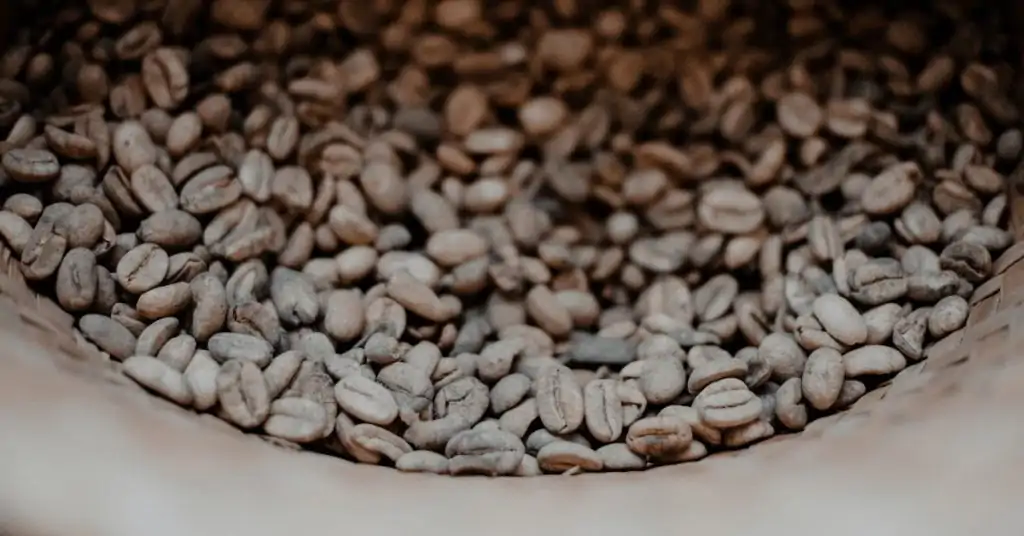
With over 153 000 tons of coffee produced in the past year, Mexico is currently the eleventh biggest coffee producing country in the world.
They mainly produce arabica coffee, and guess where most of it ends up?
That’s right – here in the US. In fact, most of the coffee we import comes from Mexico.
Coffee production in Mexico saw a decline in the 1990s, due to a crisis caused by the dismantling of the International Coffee Agreement. Thankfully, US demand helped the Mexican coffee market get back on its feet.
The coffee grown in Mexico is known for having a delicate, light body with a little acidity, and a fruity, nutty, chocolaty flavor profile.
Laos
In twelfth place is Laos, a Southeast Asian country with an annual coffee yield amounting to over 150 000 tons.
While they do grow some arabica varieties, the majority of the coffee grown in Laos is of the robusta species.
Like the robusta coffee that comes from Vietnam, it’s rich and full bodied. However, it also doesn’t usually feature any specific flavors or aromas. That being said, it may sometimes have chocolate or vanilla notes present in the flavor profile.
Nicaragua
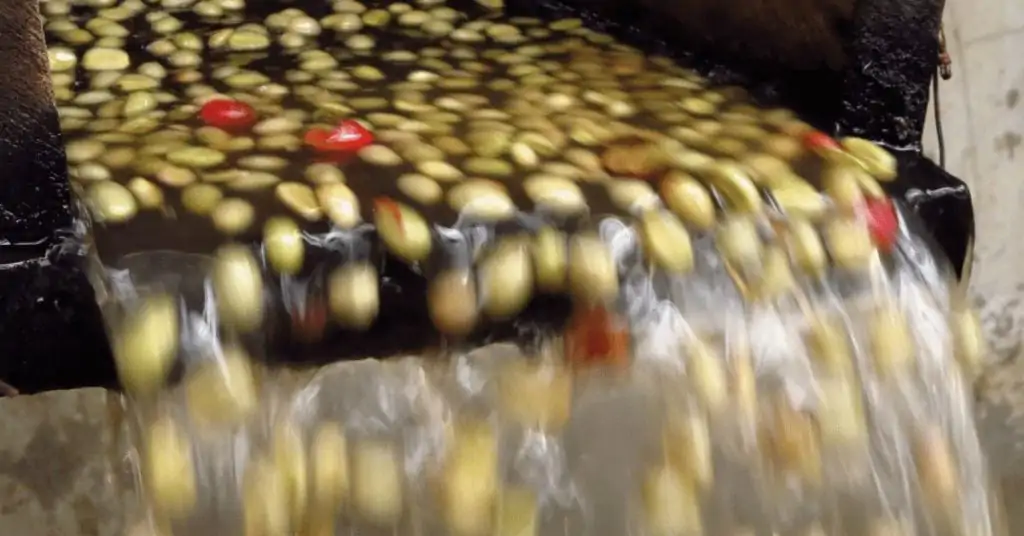
Coffee has been the main crop in Nicaragua since the later part of the 1800s. Today, this Central American nation holds the spot for thirteenth place when it comes to coffee production.
They mainly produce arabica coffee, and their annual production is currently over 128 000 tons.
Coffee beans from Nicaragua are considered to be some of the best in the world.
Their flavor profile typically contains caramel, chocolate, citrus, and floral aromas. Certain types may have nutty or vanilla overtones. Nicaraguan coffees have a remarkably well balanced flavor and body, which is what makes them taste so pleasant.
China
China might not be the first country you think of when it comes to coffee production. Still, like so many other things we consume on a daily basis, a lot of our coffee is also made in China.
At over 115 000 tons in the last year, China is the fourteenth largest global coffee producer.
And they got there pretty quickly, too. Large scale coffee production hasn’t been around in China for very long. Things only really took off in 1988 when the Chinese government launched an initiative together with the World Bank and the UN Development Programme.
Since then, coffee production has skyrocketed. And, along with that – the quality of the coffee beans produced in China has also risen significantly.
A good quality Chinese arabica coffee bean is characterized by a light to medium body, with mild acidity and sweetness. They usually have a creamy, chocolaty, and often fruity taste.
Côte d’Ivoire
And finally, in fifteenth place we have Côte d’Ivoire. This West African country currently has an annual production rate of over 103 000 tons of coffee.
They produce mainly robusta coffee, which is of a lower grade. It’s used primarily as a filler for coffee blends, as it can give arabica coffee a fuller body. And, like I mentioned earlier, it’s also used to make instant coffee.
However, the Ivory Coast is also known for a rare type of coffee bean called Arabusta. Grown at higher altitudes, it’s sweeter and a bit milder than the robusta beans grown throughout the rest of the country. It has lovely floral notes in its flavor profile, too.
Arabusta coffee beans are having a very interesting impact on coffee culture in Côte d’Ivoire. Because it creates a much more pleasant brew, it has been used in recent years to promote the quality of local coffee within the country.
Wrapping Up
So there you have it.
There are around 50 countries in the world producing coffee for export. Still, most of the coffee consumed around the world comes from these top 15 coffee producing countries.
Brazil alone accounts for 70% of the world’s coffee, with an annual output of 2.6 million tons!
The wonderful part is that coffee beans grown in various parts of the world all have unique flavor profiles – with all kinds of different tastes and aromas.
So, try mixing things up and trying coffee from different parts of the world. You’ll be blown away by all the new and exciting flavors you discover.

